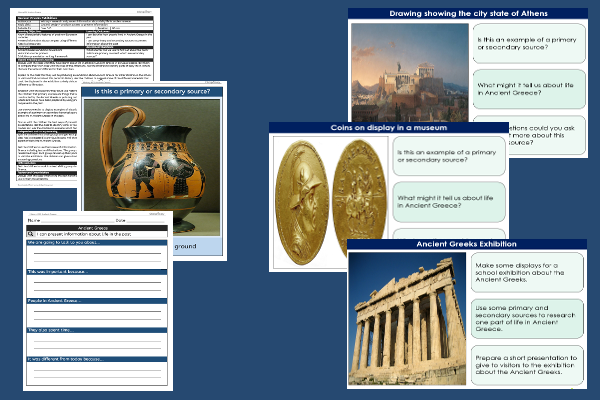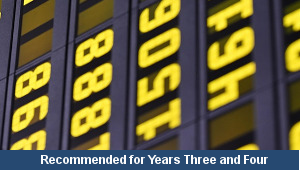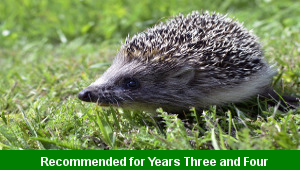Lesson Six – Ancient Greeks Exhibition

This history teaching pack for Key Stage Two gets the children to explore how to research and present different facts and information about an aspect of daily life that featured in Ancient Greece in the past.
The class can differentiate between primary and secondary sources when building posters and presentations for the historical exhibition to present to other classes in the school.
Download this teaching pack including a lesson plan, classroom activities and an interactive presentation to explore how to research and present different facts and information about an aspect of daily life that featured in Ancient Greece in the past
Activities in this teaching pack include display posters to identify and describe examples of primary and secondary sources and a template to structure and format a presentation of an aspect of daily life in Ancient Greece in the past to use when creating an exhibition about the civilization.
The interactive presentation gets the children to explore how to research and present information about an aspect of daily life in Ancient Greece in the past.
This lesson is part of a history scheme of work to get the children to investigate the growth and development of Ancient Greece by researching daily life in different city states that formed the civilization in the past. There are teaching activities for shared learning, differentiated worksheets to support independent learning and interactive presentations to introduce concepts and key skills.
-

Rounding Hundreds
Explain and model how to round some different numbers to the nearest hundred based on the place values of the digits in each number
-

Rounding Tens
Identify and record how to round some different numbers to the nearest ten based on the place values of the digits in each number
-

Classic Animal Stories
Investigate the structure and content of classic works of fiction by significant authors with animals as the main characters
-

Cities, Towns and Villages
Research and present the history of a range of different buildings and people that are part of the local community using a school exhibition
